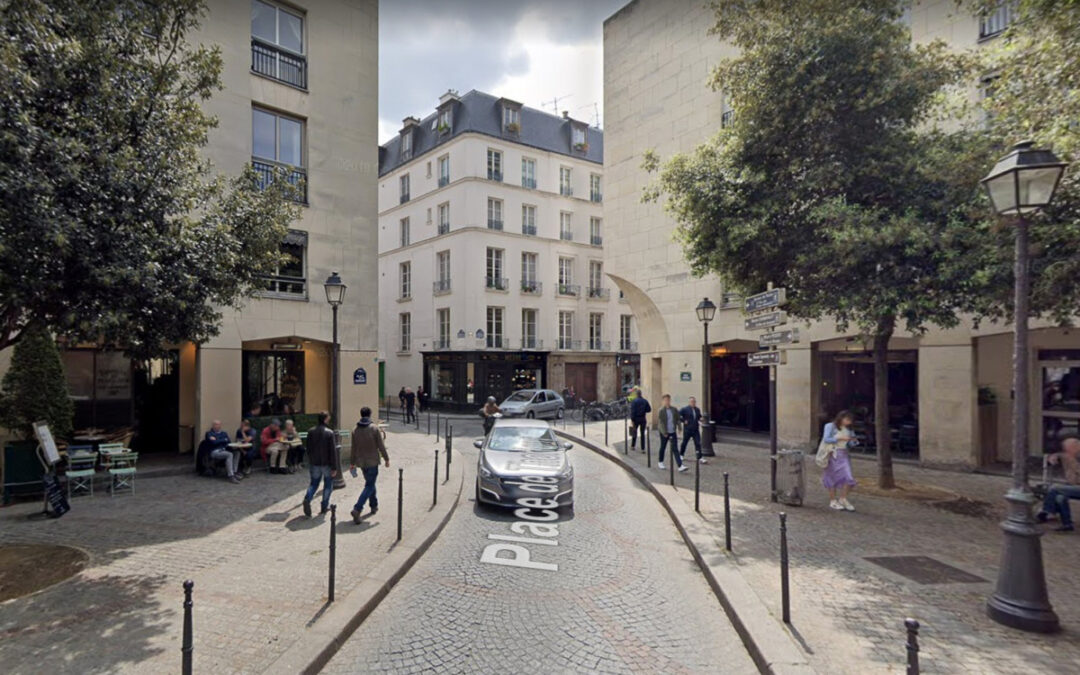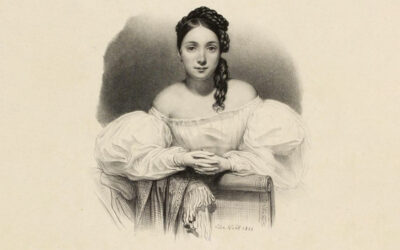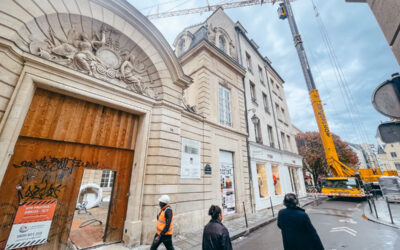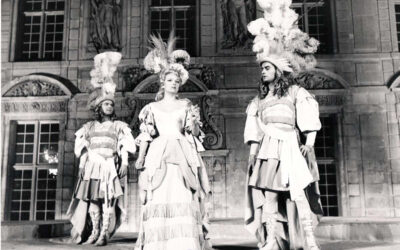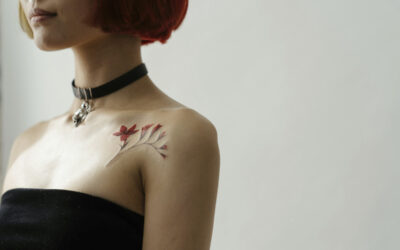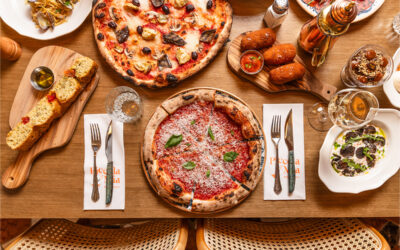Following on from rue des Quatre Fils, after the intersection with rue Vielle du Temple, rue de la Perle emerges.
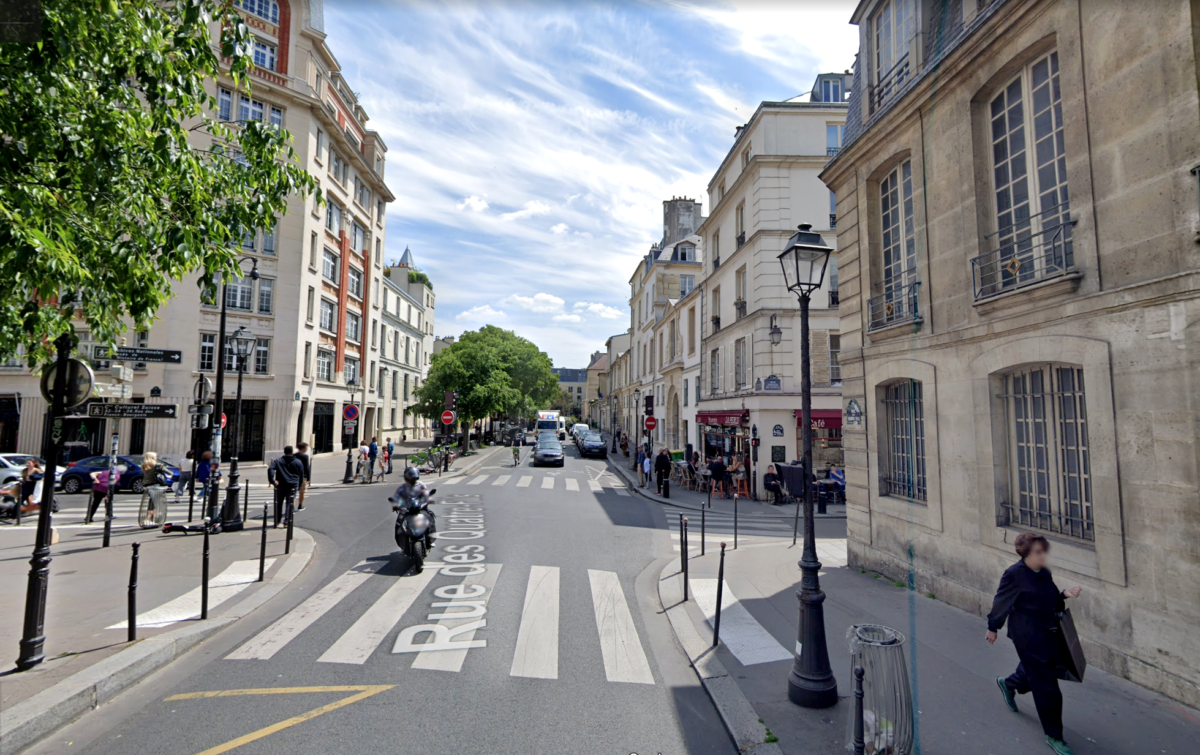
After having a coffee at the local bistro, served by Eric, Didier, Magid or Maximus, let's head down this rue de la Perle, whose name comes, according to some, from a game of Paume or an establishment called "A la Pearl of the Tripots”, which were there. It’s up to everyone to choose their version according to their deepest inclination.
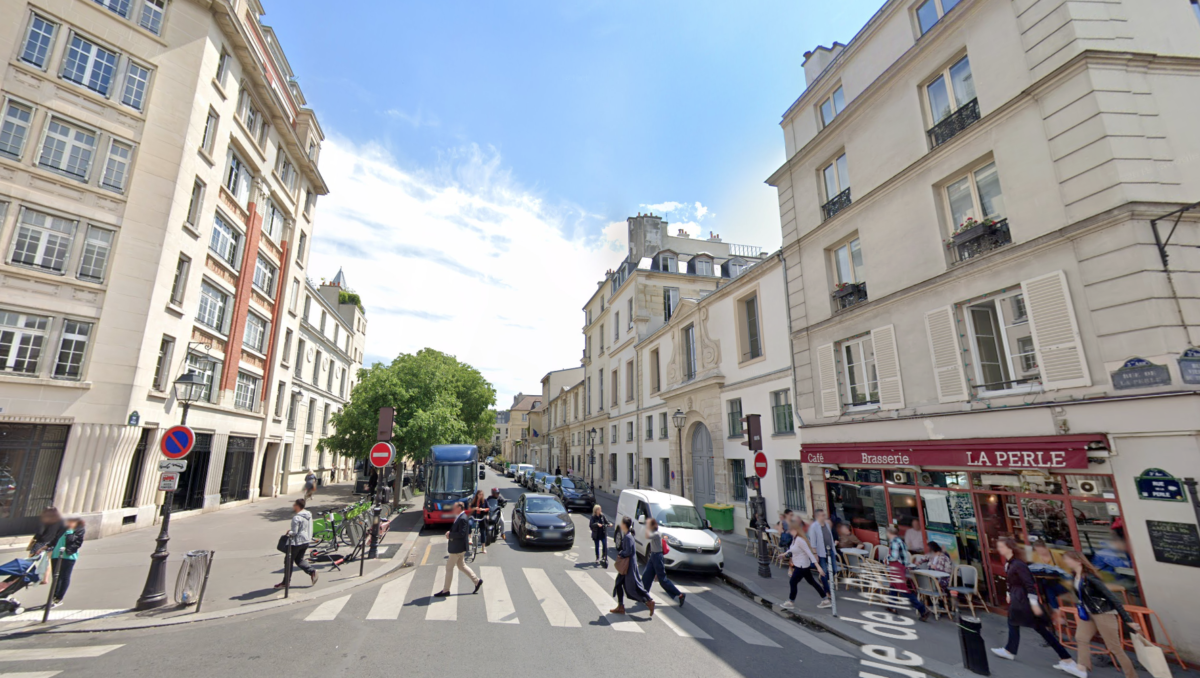
At 9 is the first vocational school for young girls, founded in 1862 by Élisa Lemonnier, considered the founder of vocational education for women in France.

At 3: hotel designed by Libéral Bruand, who was, among other things, the architect of Richmond Castle, in England, for the Duke of York, of the Salpêtrière Hospital, of the Hôtel des Invalides, of the Notre Basilica -Lady-of-Victoires…
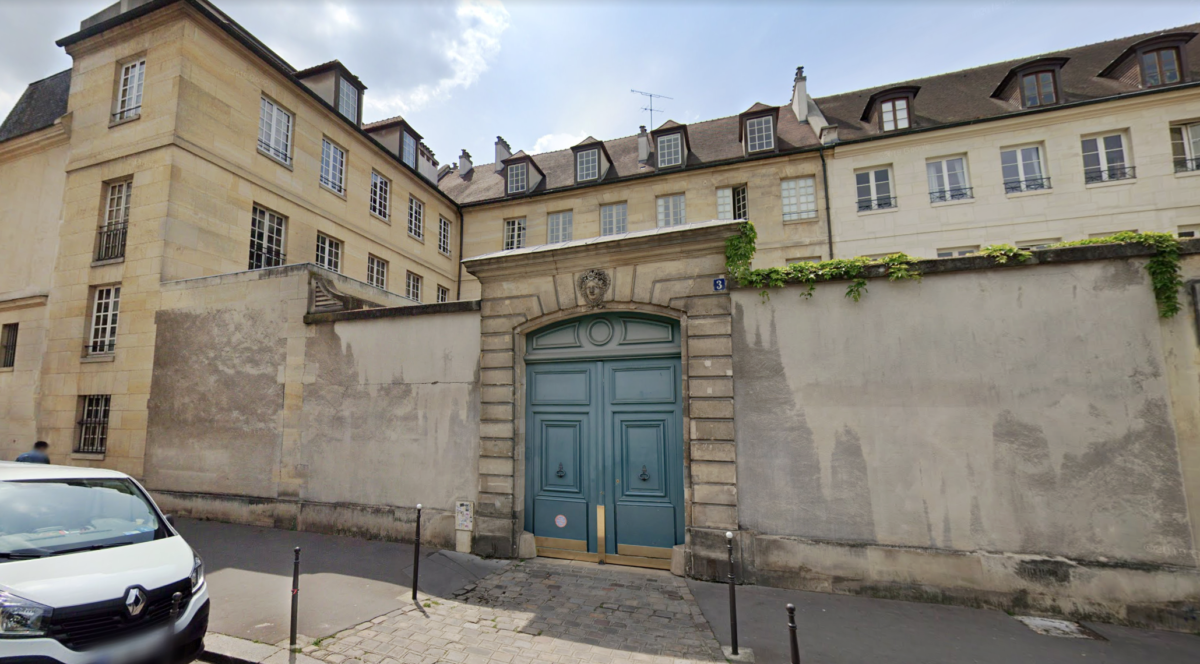
…and the neighboring hotel, at No. 1, which bears the name of Hôtel Libéral Bruant, which we spell with a final t for a change, because both forms are possible. Formerly the lock museum, it is currently a contemporary art center.
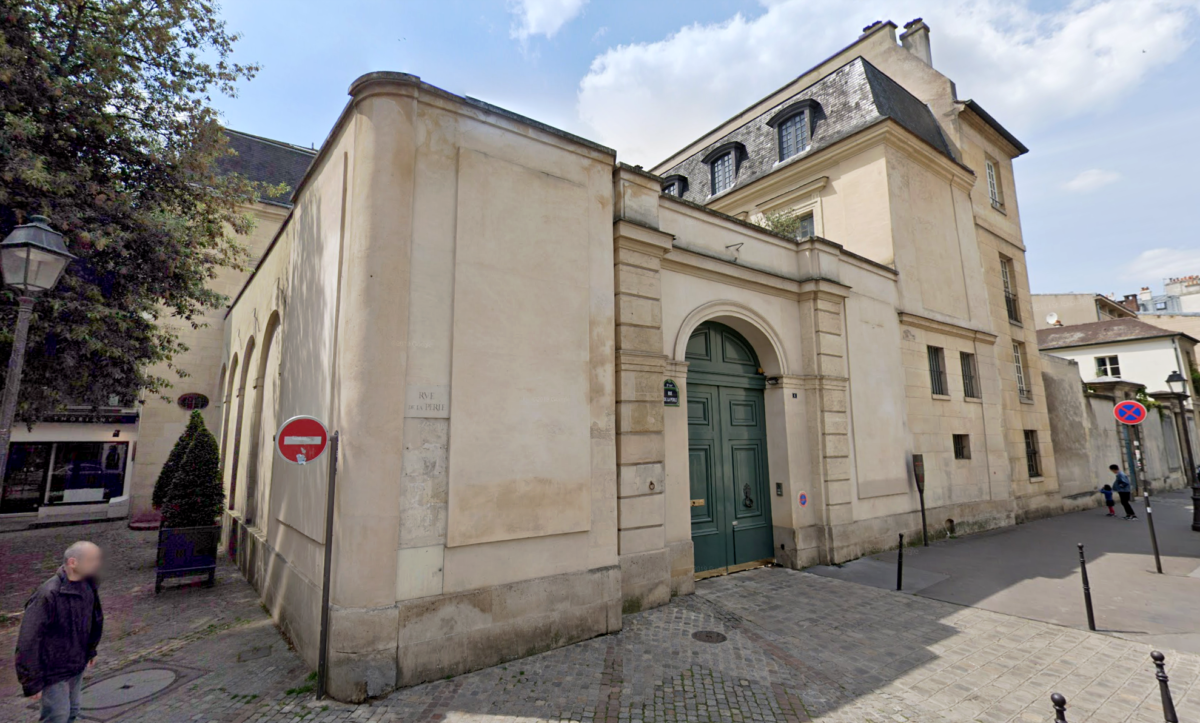
We are already arriving at the end of this short street. Probably due to the proximity of the Picasso museum, the walls are suddenly covered with works by Street artists, including one by Shatters, who uses pieces of mirror or colored glass for his creations and, watched over by an anonymous chimera, a frame of a bicycle embedded in a corner, the work of Ride In Peace, which has already hung around sixty of them throughout Paris.
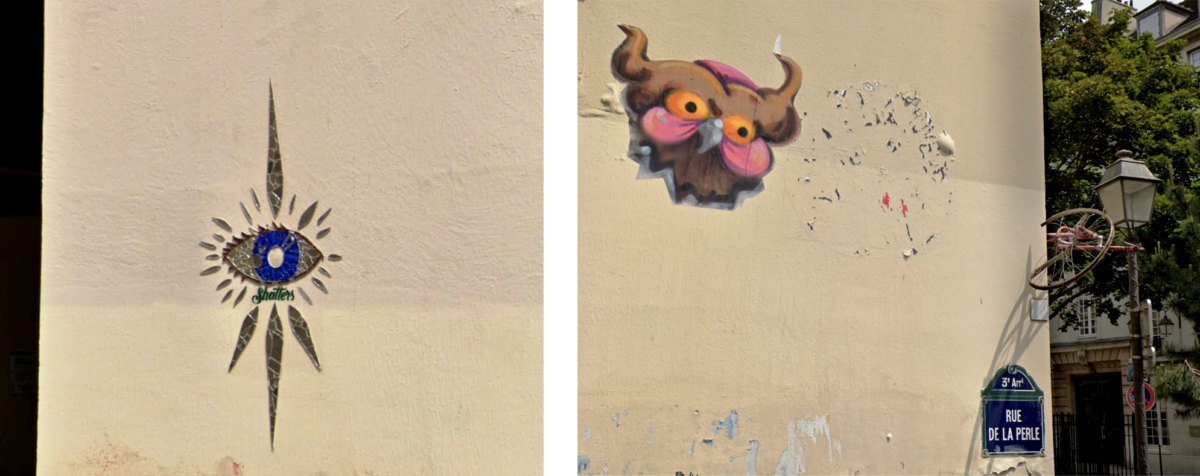
Then opens the Place de Thorigny (Jean-Baptiste Claude Lambert), who was provost of the merchants of Paris from 1726 to 1729. Charles Perrault lived there from 1685.
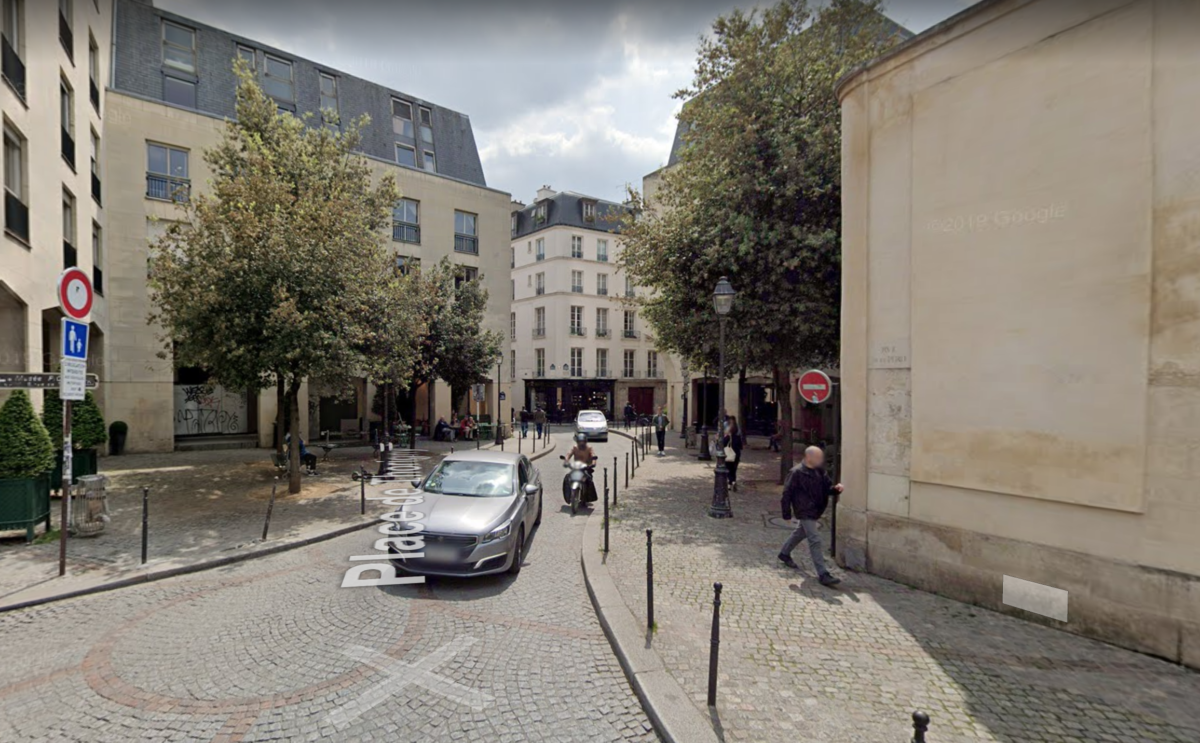
Other street artists have strewn their creations on these walls. We notice a Mona Lisa from GZUP, another Anarchist Heart, one of John Hamon's posters, a Pablo Picasso by Invader, a Sonic from GZUP also, a Diamantaire... it's really the anteroom of the museums!
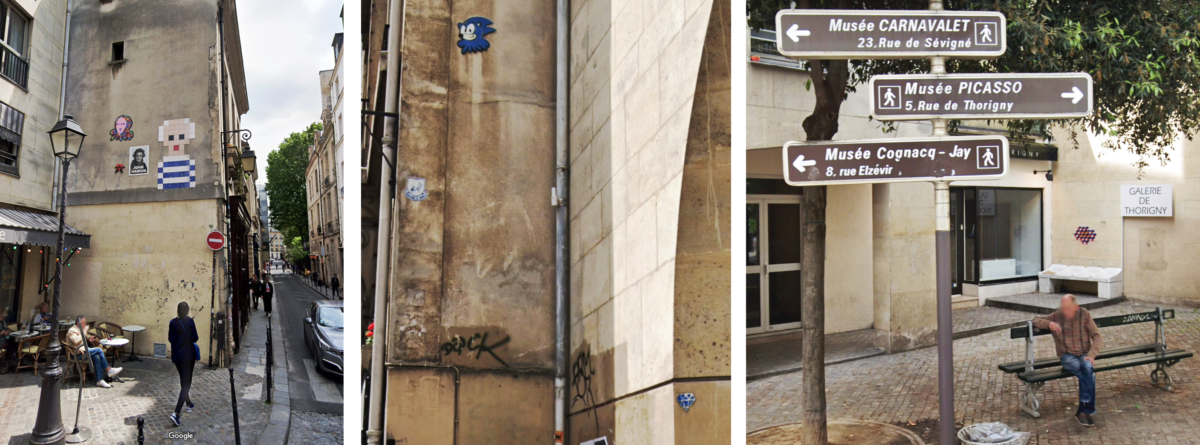
On the right, let's turn into a street which has had different names throughout history, including that of "rue de Diane" because Diane de Poitiers lived in the Hôtel Barbette, whose gardens extended up to her, named today rue Elzévir.
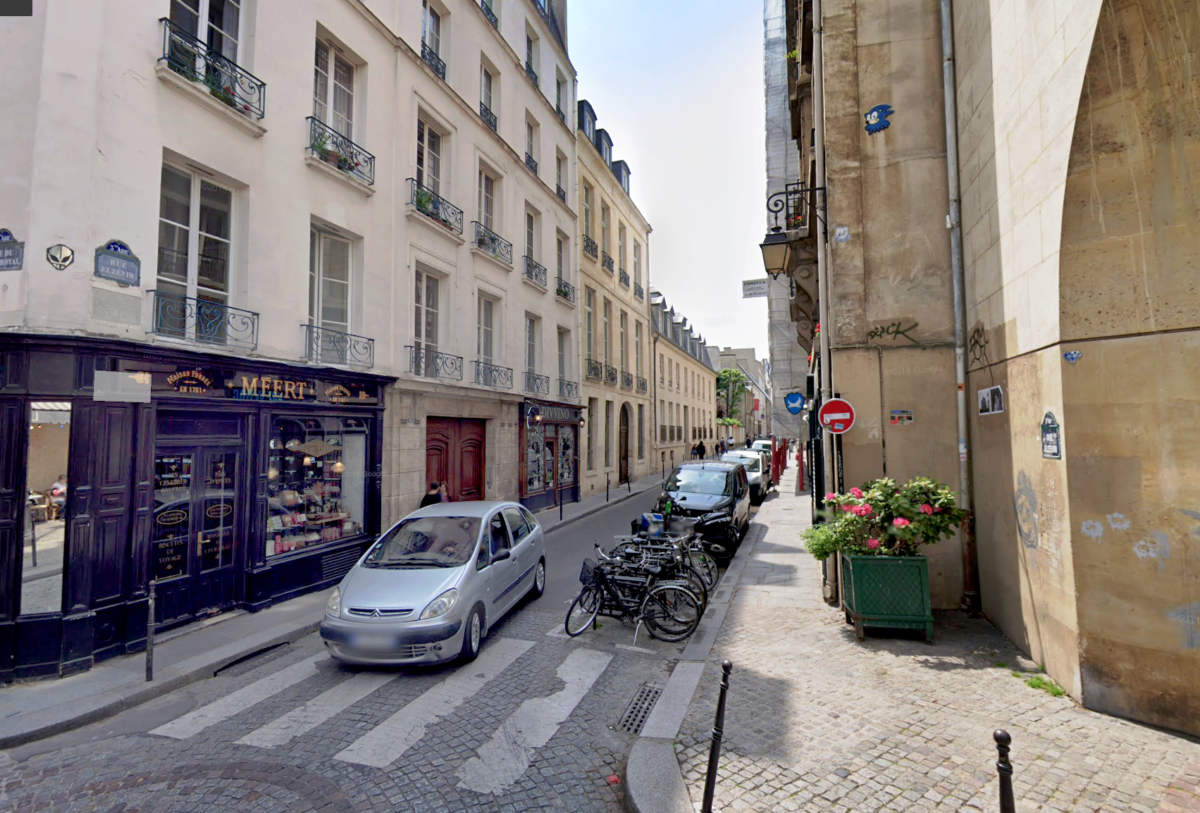
This pretty name of Dutch origin is that of a family of Dutch typographers and printers who practiced their trade throughout the XNUMXth century in Leiden and Amsterdam. They invented the typeface that bears their name.
This same name was given in 1921 by Francis Thibaudeau to one of the four large families of fonts that he identified in his classification: the didots, the Egyptians, the antiques and the elzvier, therefore, including the Garamond, the Palatino and the Times are among others.
The main characteristic of elzévirs is that they have triangular serifs (small extensions which finish the ends of the characters). The fonts used for the signs of the two chic, classic and slightly austere boutiques which open the street undoubtedly belong to this family.
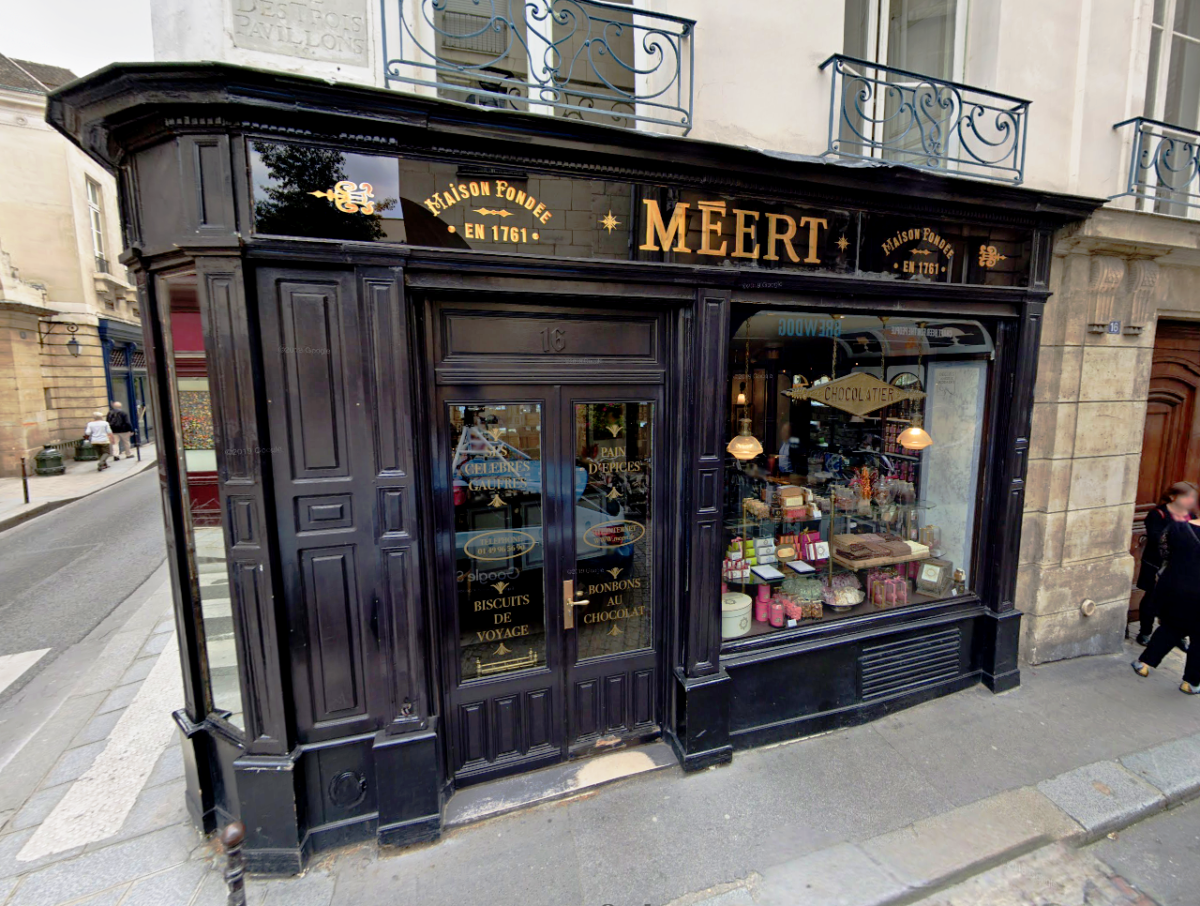
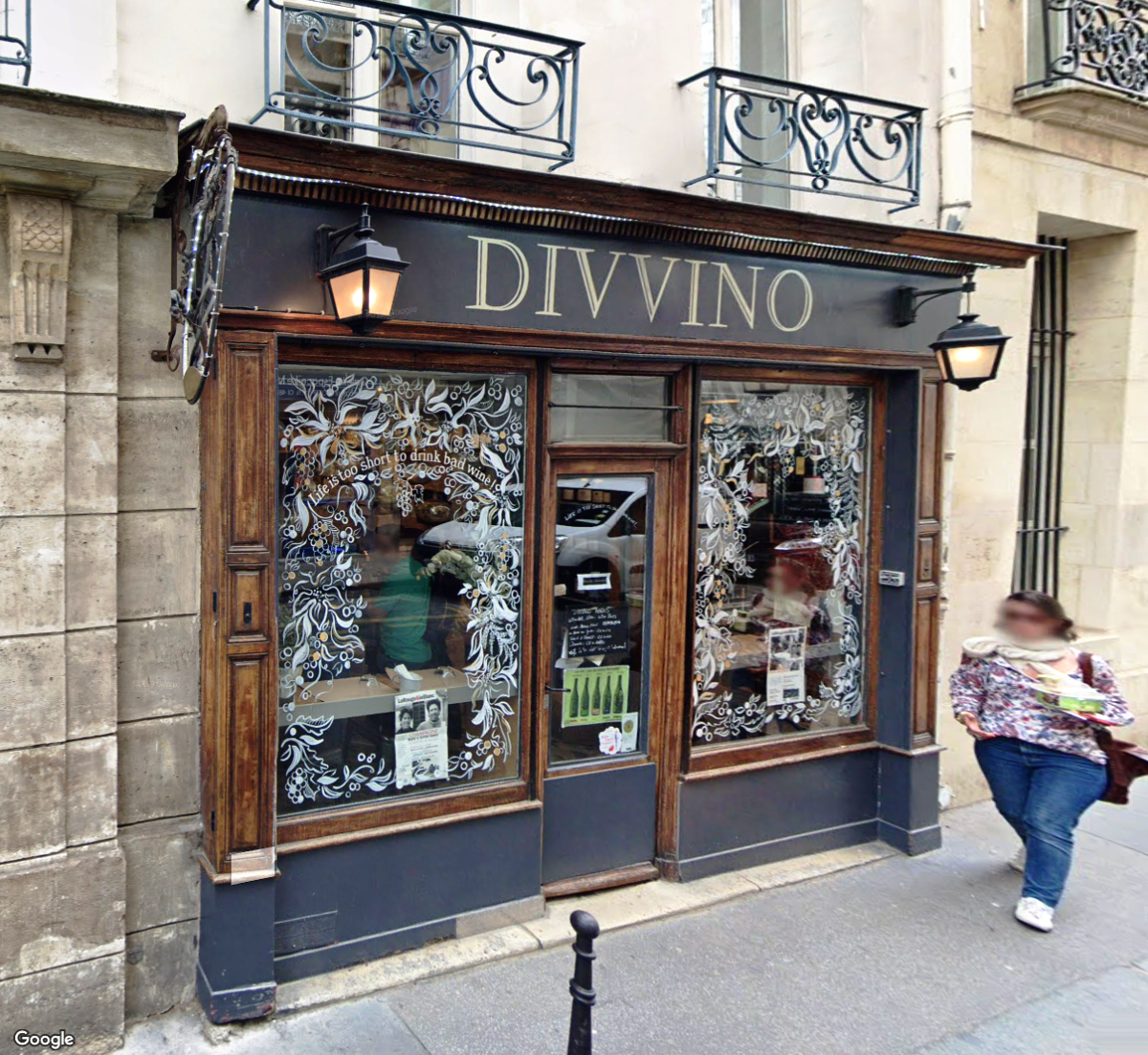
Let's stay in the writing, in the broad sense of the term: Louis Ferdinand Céline, in “Mort à credit”, locates in the rue Elzévir, without specifying the number, the workshop and the shop of the engraver Gorloge with whom Ferdinand Bardamu, character main character of his novel (as well as “Voyage au bout de la nuit” and its sequels) works. As Céline's novels are largely autobiographical, we can think that the author himself experienced what his character experienced.

Without transition, let's move on to a writing colleague of the sulphurous Céline: Madame de Sévigné. She apparently lived at number 14, from 1672 to 1677. We will tell you more about this famous letter writer when we visit the street that bears her name, where the Carnavalet hotel is located, which has become the city's historical museum. of Paris, where she lived from 1677 until her death in 1696.

At level 10, the rear and garden of the Swedish Cultural Center located on rue Payenne, which we will also talk about later.
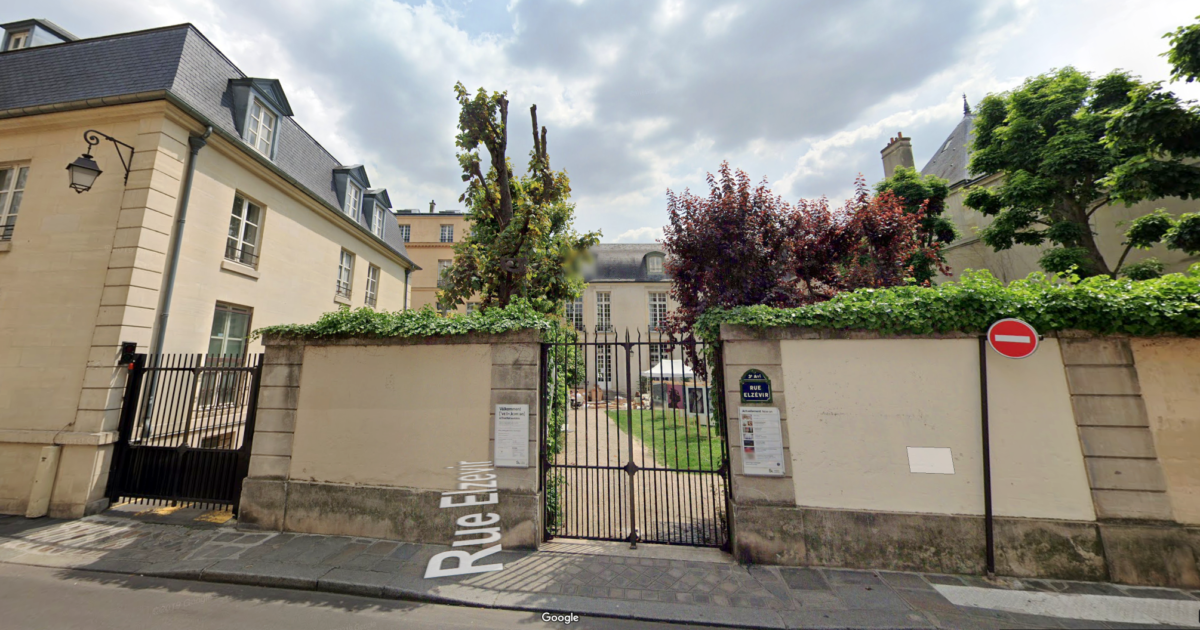
On the left opens rue Barbette. We will come back to take a look at this street as soon as we have finished with Rue Elzévir.
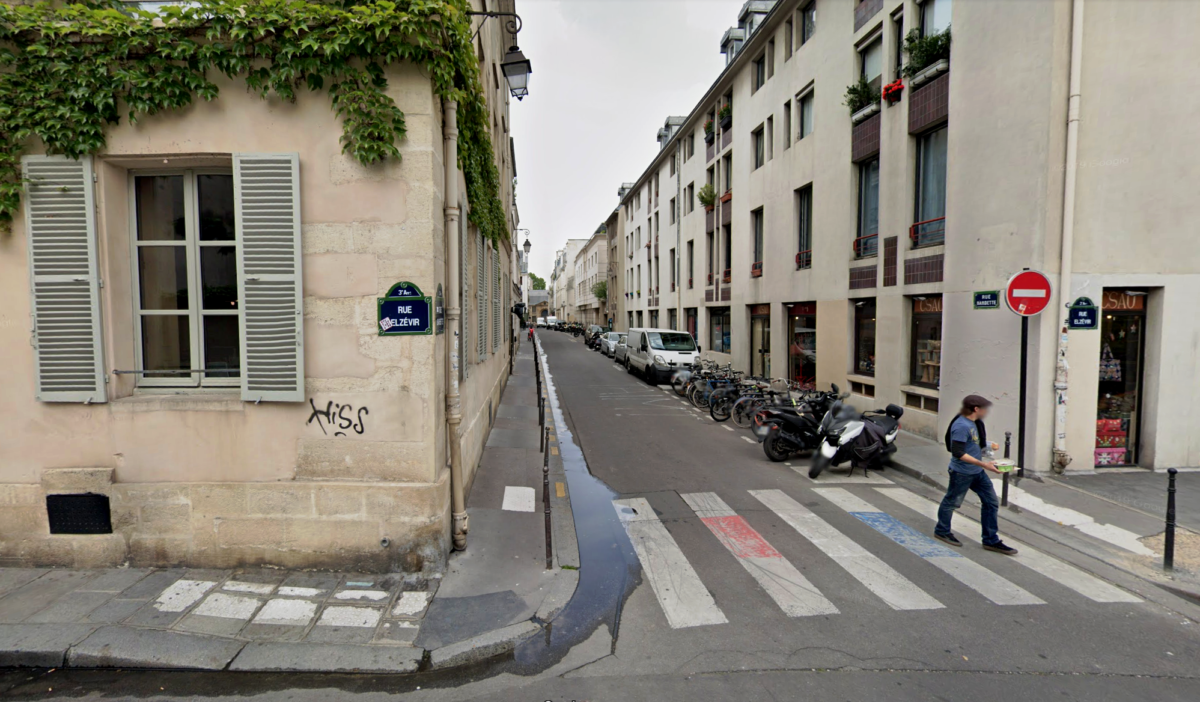
At No. 8, the Hôtel de Donon has housed the Cognacq-Jay museum since 1990. Starck's train will talk about this building a hundred times better than us. However, let us provide additional information about the couple who brought together the collections that this museum now houses.
Ernest Cognacq (1839-1928) lost his father at the age of twelve and left to try his luck in Paris at the age of fifteen. He is employed in various stores, including “Aux Quatre Fils Aymon” – which we did not expect to find here – and “Au Louvre”, from where he is quickly dismissed for inadequacy.
Many would have given up and grumbled after such a setback, but not Ernest who, with his wife Marie-Louise Jaÿ (1838-1925), ended up, after many mishaps that we will spare you here, by creating the famous Samaritaine store.
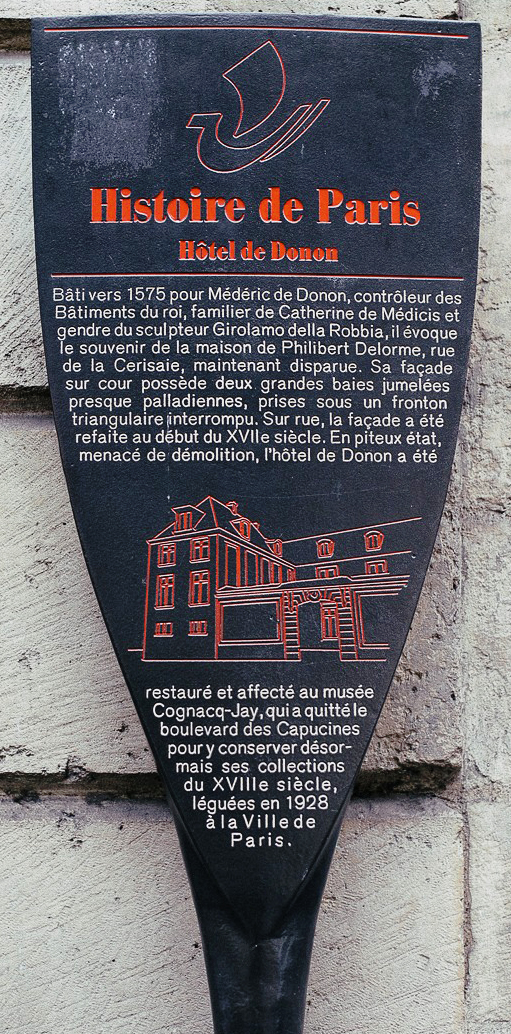
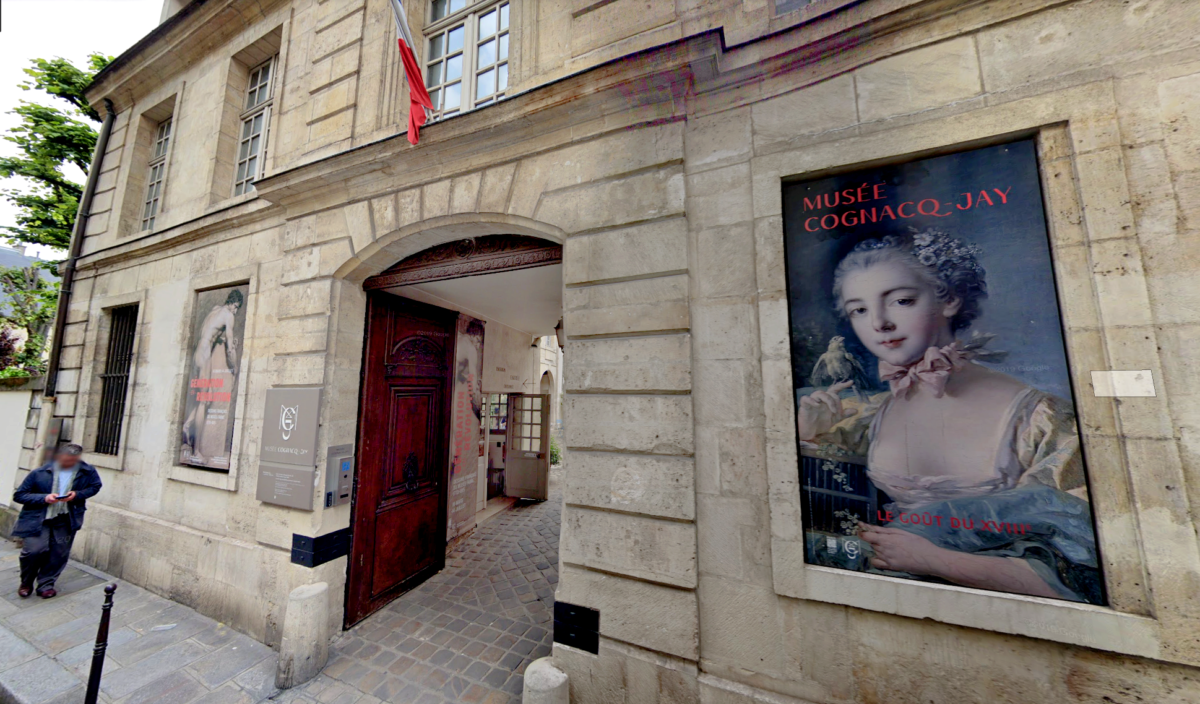
Here we are at the end of rue Elzévir. At the end, rue des Francs-Bourgeois.
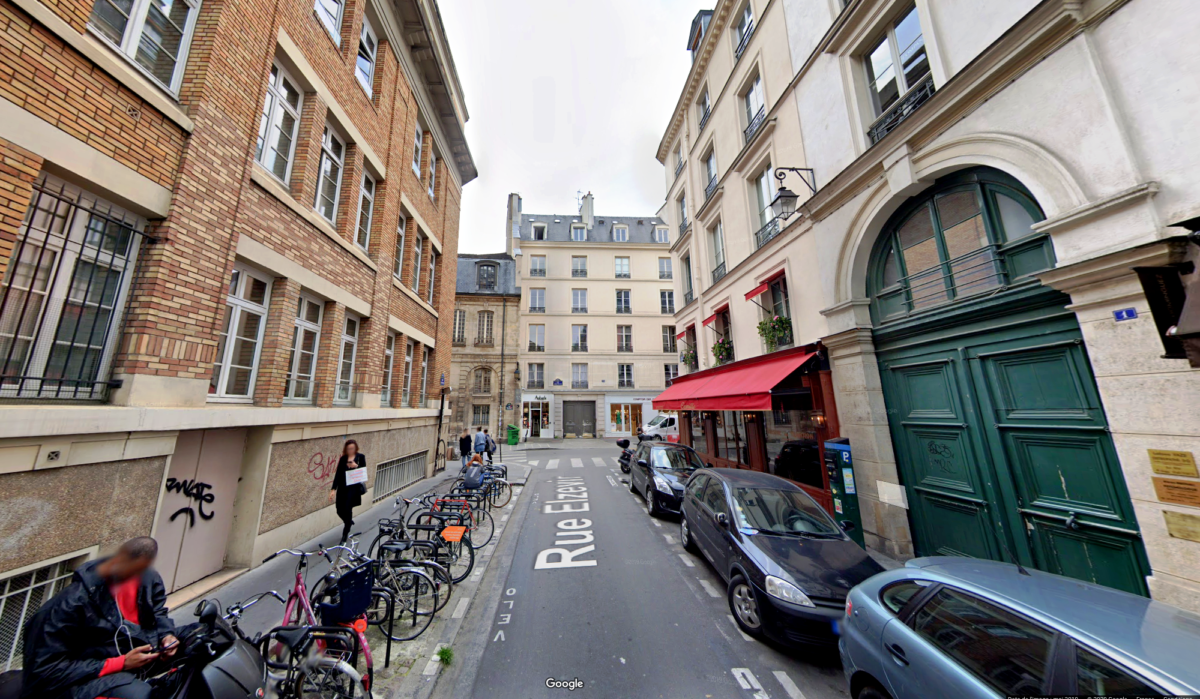
Let's turn around and take, as promised, rue Barbette. In passing, let us salute the courage of this young woman as well as her creativity in terms of diverting street furniture.
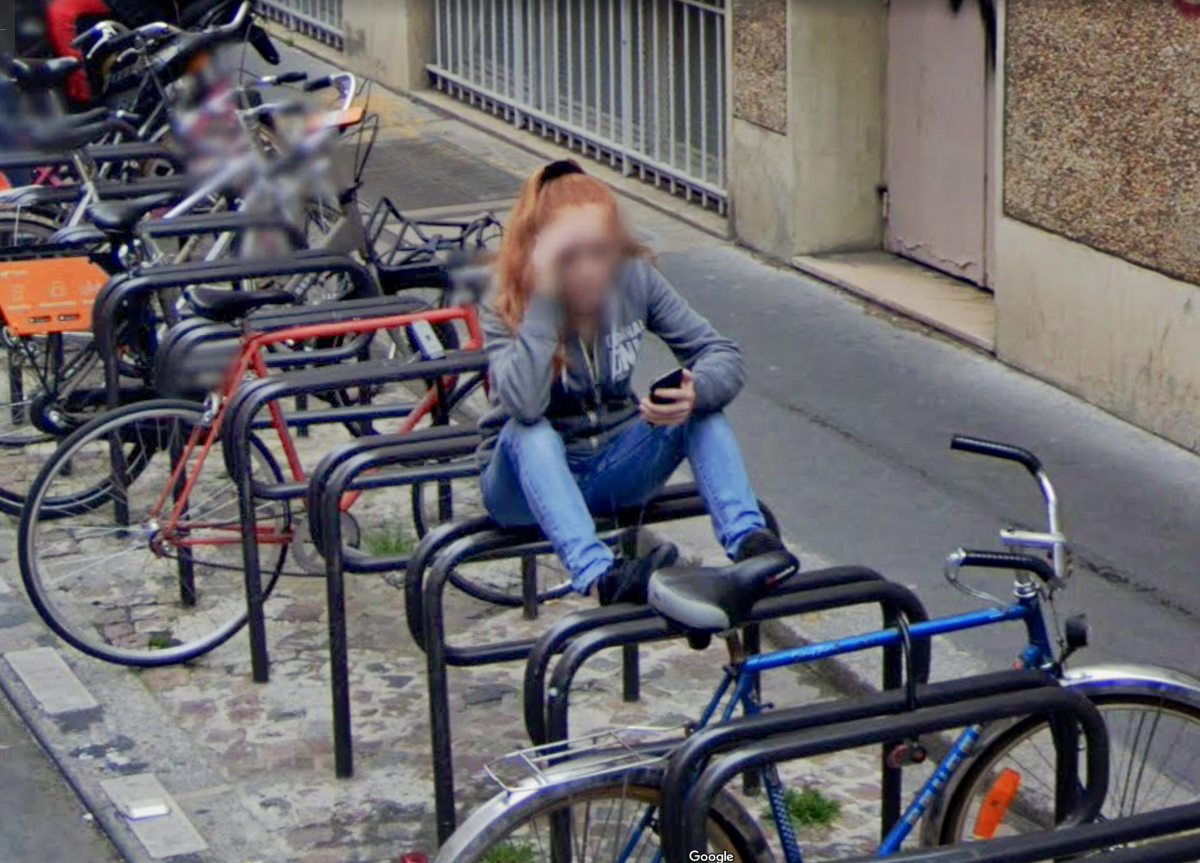
Rue Barbette, then. Etienne Barbette (around 1250-1321), from a family of wealthy merchants, was, among other things, provost of the merchants of Paris. Around 1300 he built a "country house" on a huge property outside the enclosure of Philip Augustus, which he owned.
It became the Hôtel Barbette which, enlarged and embellished, later served as the residence of Queen Isabeau of Bavaria (1385-1422) or in the following century to Diane de Poitiers (1553-1566), favorite of King Henri II.
The building gradually disappeared during the 1563th century to make way for Rue Barbette created in XNUMX.
At 3, despite our efforts to remain discreet, two young women recognized the Google Car, which was also reflected in a glass door.
At 5, hotel which belonged to the Thumery de Boissise family of magistrates from 1700 to 1748, then to the Souchet de Bisseaux family until the Revolution.

At number 7 of this street, this car park was formerly a hotel, a police station, then from 1887 to 1930, a workshop where the pastry chef Evrard designed, manufactured and marketed Pierrot Gourmand confectioneries. Nothing about this building recalls this fact of the utmost importance to anyone who was a child. Let's demand that we install a Stark oar there, slightly reworked in its shape so that it evokes a gigantic lollipop.
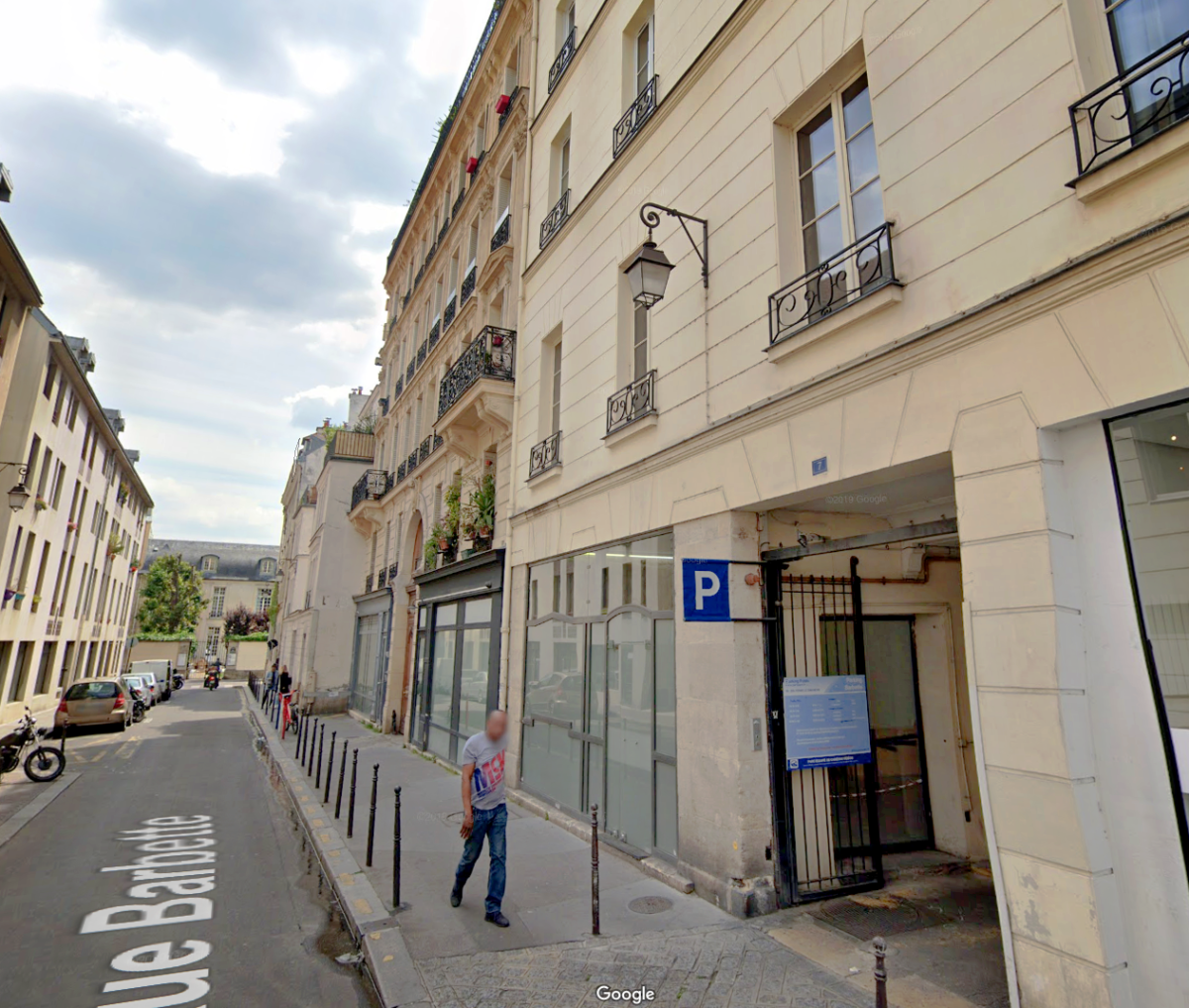
At No 9 is the hotel of the Pommereuil family which was acquired by Michel-Étienne Turgot, provost of the merchants of Paris. We definitely often come across personalities who have fulfilled this function: Caumartin, Thorigny, Barbette... they were in some way the ancestors of the mayor of Paris. The most famous of them, Etienne Marcel, was provost from 1354 to 1358.
Her role in the revolt of the bourgeois of Paris who attempted to limit the royal prerogatives of the dauphin Charles in fiscal matters led, in addition to her death, to the decline of this function until 1789, when she disappeared. In 1975 the position of “Mayor of Paris” was recreated, the first of which was Jacques Chirac from 1977 to 1995.
But let's return to Turgot. The name of this character remains essentially attached to the plan of Paris in cavalier perspective known as Turgot's plan, the drawing of which he commissioned from Louis Bretez. This plan, produced at approximately 1/400 scale, measures 2,49 m by 3,18 m.
It covers approximately the current first eleven arrondissements of Paris and the Marais naturally finds its central place there. D'Alembert the encyclopedist, Turgot the cartographer, glorious ancestors of Wikipedia and Google Maps, the Marais can be proud of having sheltered you within its walls!
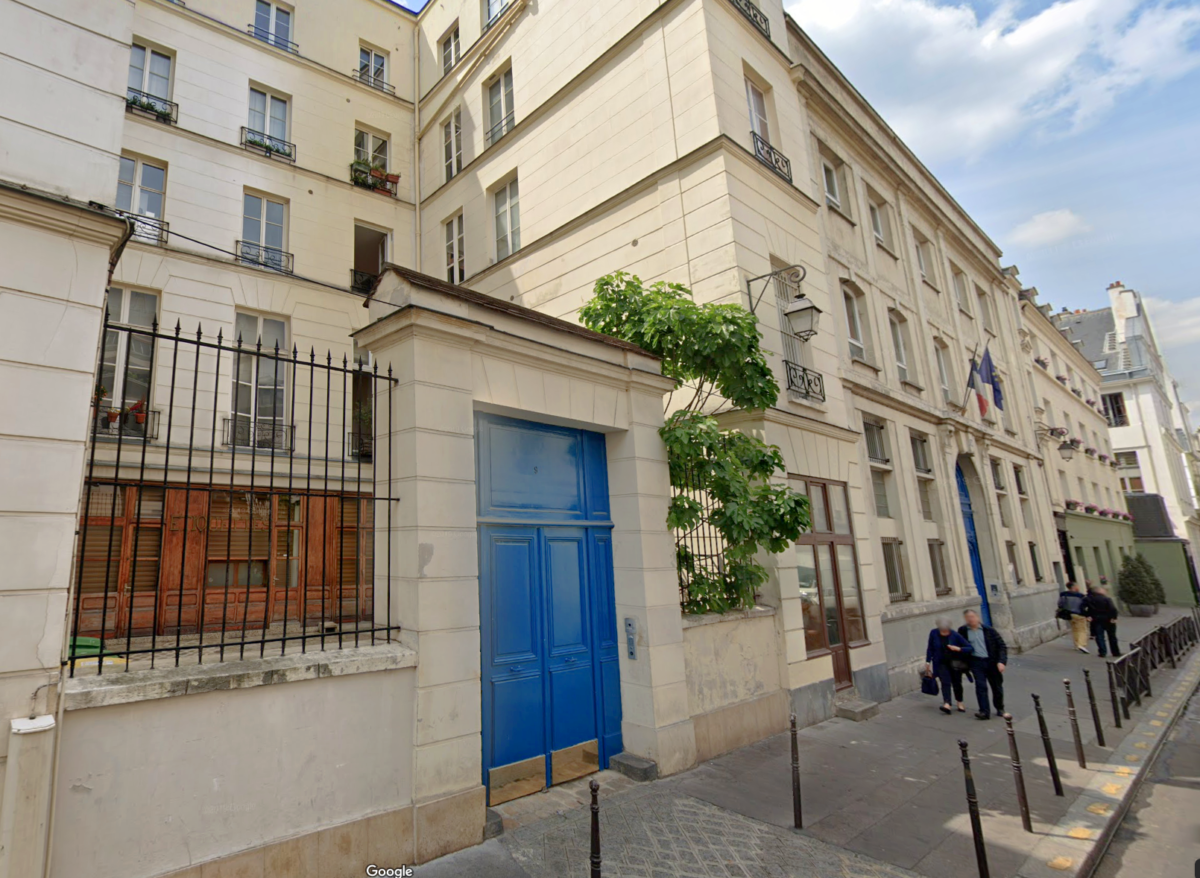
No. 11 is a hotel from 1635 where the son of the first president of the parliament of Paris, magistrates and a lieutenant general resided successively. The door and the start of the XNUMXth century staircase are classified. Today it is one of the two annexes of the Victor-Hugo college.
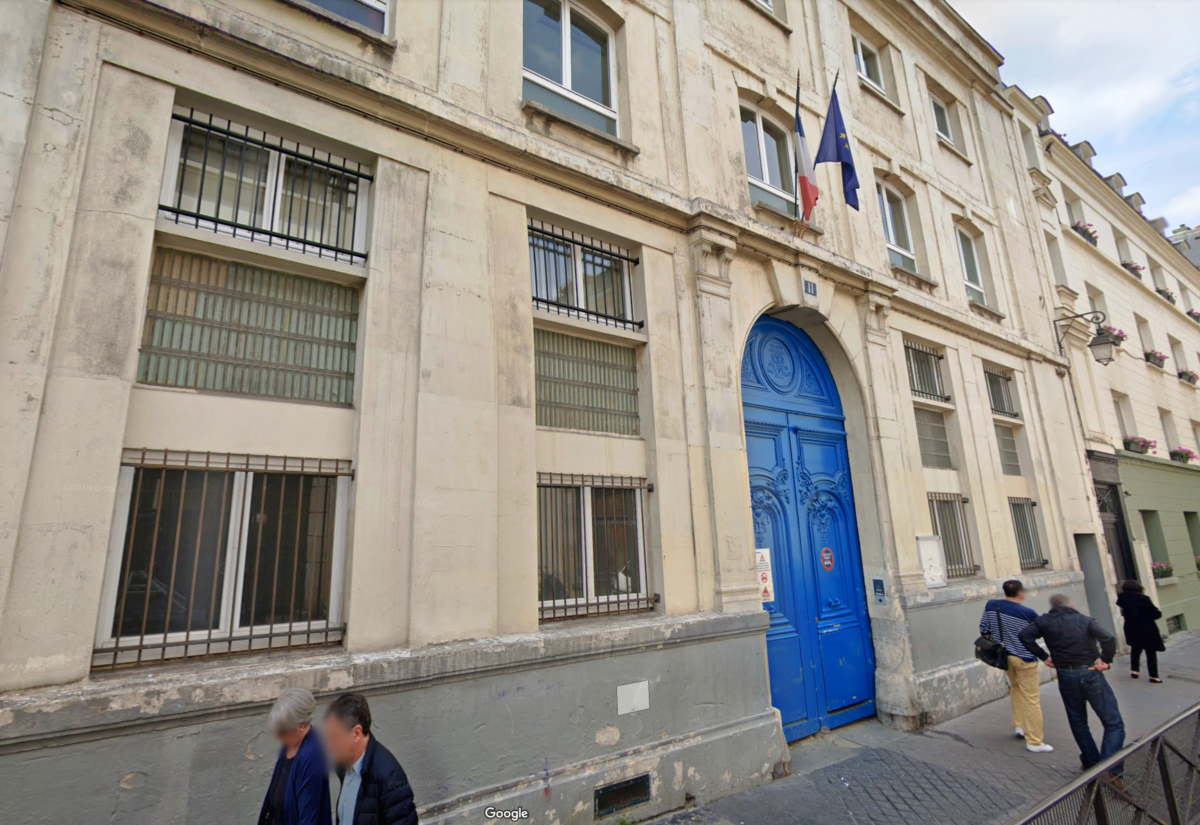
Le 15 is a plush hotel built in 1769 by Jean-Baptiste Lemarié d'Aubigny. Today we can read on the pediment which overlooks the superb portal surmounted by two medallions: “DELARUE CLOUTERIE”, which proves that one can make a fortune not by doing nothing, but by making nails.
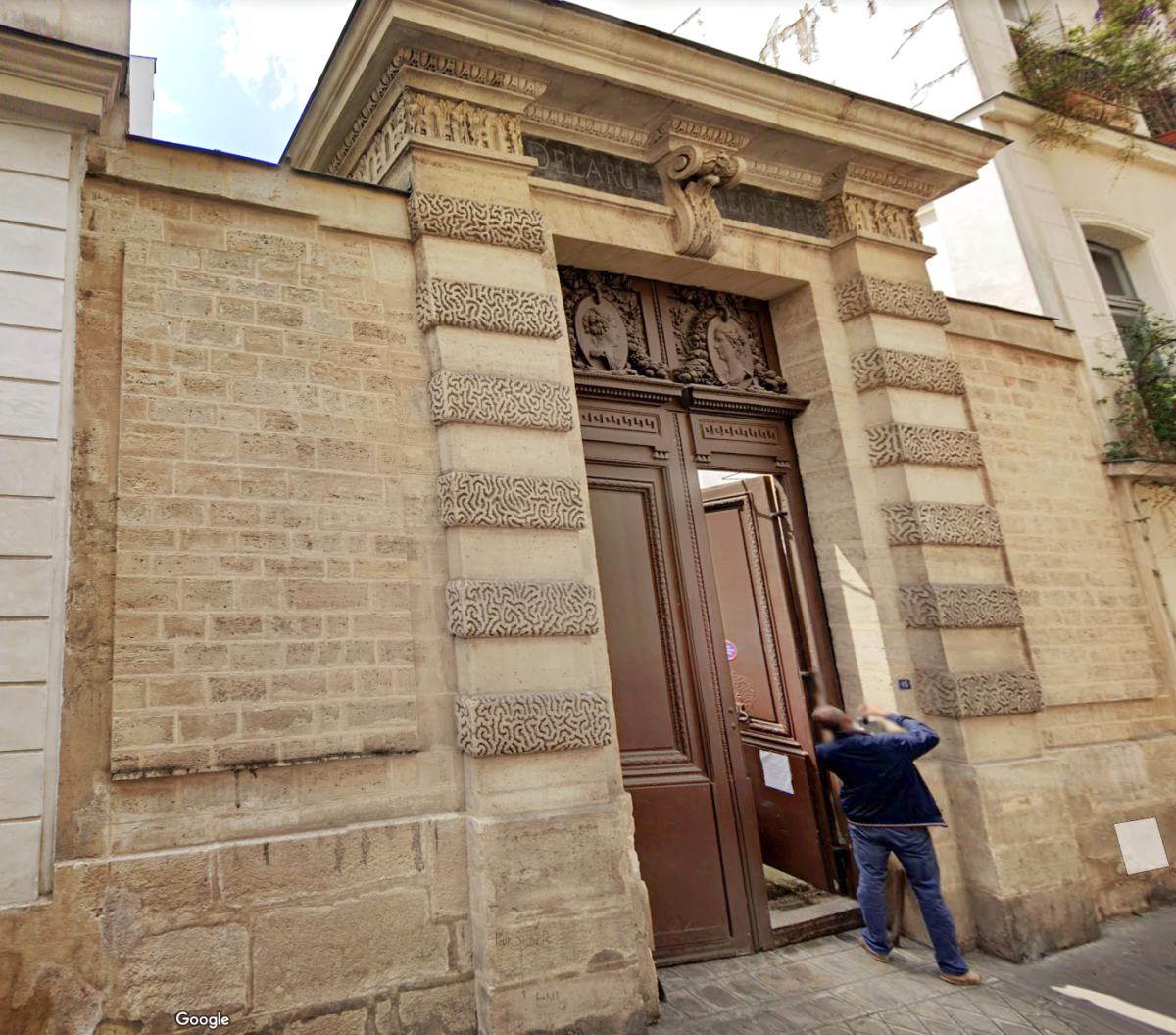
End of rue Barbette, which leads to rue Vieille-du-Temple.
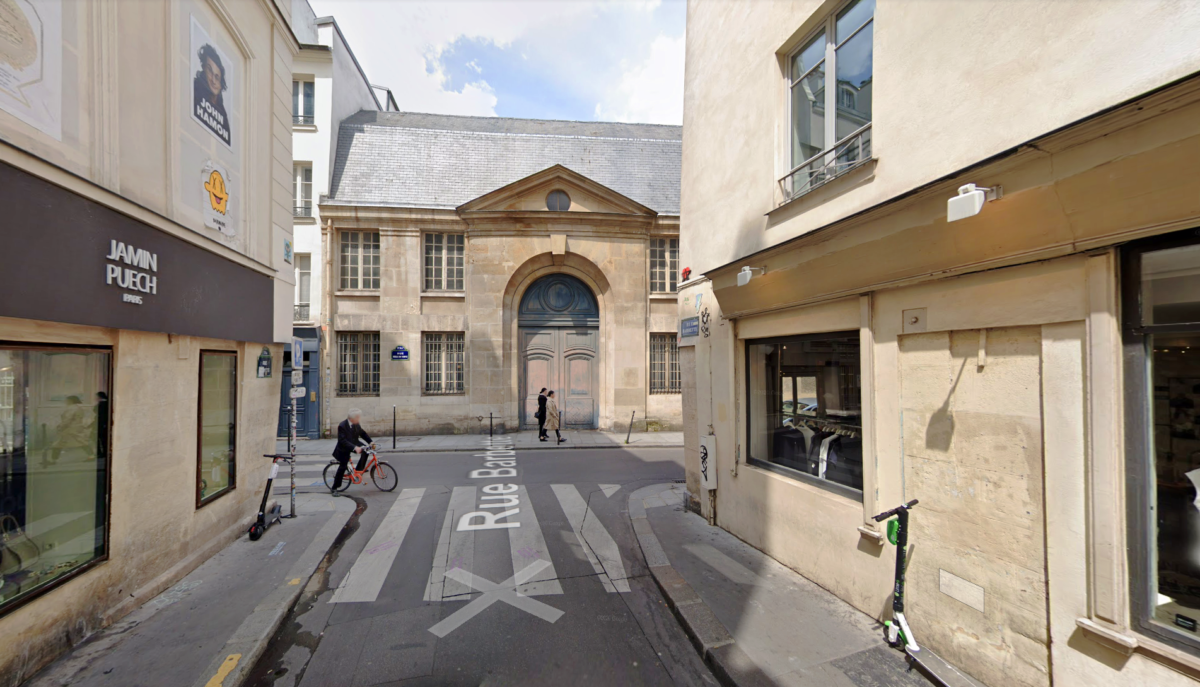
Text: Djiefsi
30.06.20
FOR PASSIONATES OFUS
Juliette Drouet actress, muse and mistress of Victor Hugo
At 14 rue Sainte-Anastase, from 1836 to 45 and at 12 from 1845 to 48, a few hundred meters from Place des Vosges, lived the muse and lover of Victor Hugo, Juliette Drouet née Julienne Gauvain.
Rue Vieille-du-Temple: the fabulous construction site restarts
A luxury hotel will be created at the end of the work. On the ground floor, the old stables and carriage houses will house the restaurant on the large courtyard, while the first courtyard, on rue Vieille-du-Temple, will feature two businesses continuing its 19th century layout.
The Marais festival, a fabulous story
The Festival du Marais dates back to a time that those under 60 cannot know. However, this leading artistic event was for a long time one of the most popular cultural events in the capital. For a quarter of a century, from 1962 to 1987, this unique festival…
NOW ON THE MOOD MARSH
The best tattoo parlors in Marais
Tattooing, an age-old practice, has long been the prerogative of convicts, dock workers, the underworld and sailors. Although it has become democratized, now affecting all profiles and concerning one in five French people, including 16% women compared to 10% men, it still remains taboo due to its definitive and transgressive nature.
Juliette Drouet actress, muse and mistress of Victor Hugo
At 14 rue Sainte-Anastase, from 1836 to 45 and at 12 from 1845 to 48, a few hundred meters from Place des Vosges, lived the muse and lover of Victor Hugo, Juliette Drouet née Julienne Gauvain.
Piccola Mia, the pizzas of the Republic
On the Place de la République, a brasserie with Italian accents has just opened, which quickly made people forget the old Pizza Pino. Welcome to Piccola Mia, the fruit of the joyful encounter between Italian chef Denny Imbroisi, pizza chef Julien Serri and mixologist Matthias Giroud who creates a creative cocktail menu.

